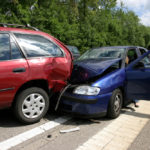Train Accidents — Who Is at Fault?
Personal Injury Lawyer
On July 30, 2018, a CSX train stuck a car near Atlanta, killing three occupants and sending a fourth to the hospital. The accident is under investigation, but a witness reports that the car may have tried to beat the train across the tracks.
Even if the driver might have been at fault, it would be premature to assign blame for the collision. Drivers may be negligent when they are aware of an approaching train but choose to cross the tracks rather than waiting for the train to pass. However, train operators and railroads are often partially to blame when trains collide with cars or pedestrians.
Thousands of people are injured every year in train accidents. Injuries happen when trains cross a road, but train passengers can also be injured when a train derails. Even when a freight train derails, nearby pedestrians and vehicle occupants are at risk.
Causes of Train Accidents
Train operators may be at fault when they operate their trains at an excessive speed or fail to sound a whistle to warn cars that they are approaching a crossing. The railroad company that owns the train tracks may be at fault for failing to install barriers that prevent cars from crossing in front of an oncoming train.
Train companies may be at fault for failing to maintain cameras that allow operators to view obstructions on the tracks. A camera failure allegedly contributed to a CSX accident that killed a pedestrian.
The same behavior that contributes to unsafe driving can do the same in a train. Operating a train while intoxicated can cause an engineer to fall asleep or to ignore safety protocols. Engineers who are distracted by cell phone operation may fail to reduce their speed as they approach residential areas or where the track curves. An engineer who isn’t watching the track has no opportunity to prevent collisions and puts everyone at risk.
While human failures are the most common cause of train accidents, track failures are responsible for a significant number of derailments too. Improper track maintenance causes trains to derail when the railroad fails to notice and repair broken tracks and switches. Regular inspections and maintenance could prevent those accidents, but some railroads improve their profits by slashing their track inspection budget.
Improper maintenance of trains contributes to mechanical problems, such as brake failures, that cause train accidents. It is difficult to stop a fast-moving train under the best conditions. When brakes fail, the consequences are devastating for anyone in the train’s path. Brake failures also contribute to derailments when trains enter a curve without reducing speed.
Malfunctioning signals make drivers believe it’s safe to cross a track when a train is fast approaching. Signal failures lead to dozens of collisions every year.
The Need for Automatic Braking
The Federal Railroad Administration recently threatened to fine 13 railroads for failure to meet deadlines for installing automatic braking equipment. The braking technology is designed to coordinate signals that are broadcast from trains, track monitors, and dispatchers. The system can slow or stop a train automatically when a train appears to be out of control, when a switch is out of position, or when a track is blocked.
The automatic-braking system was mandated about ten years ago, after a deadly train collision in California. A number of train accidents since then could have been prevented by the automatic braking system.
Unfortunately, train companies have been slow to protect people and install the necessary equipment. Only about 25% of passenger routes are covered by the system, while 40% of freight trains are operating on routes that do not have automatic-braking technology.
Liability for Train Accidents
Sorting out fault for train accidents can be difficult. The blame might be spread among the train operator, the railroad that owns the train, the company responsible for track and signal maintenance, a railroad that fails to implement mandated safety technology, and any driver or pedestrian injured in the accident.
When train passengers are injured, the task of allocating fault is easier, because a passenger will rarely if ever do something that contributes to an accident. Even then, however, there may be more than one negligent party responsible for the train accident. An experienced lawyer from a personal injury law firm can conduct a thorough investigation to make sure that blame is assessed in a way that maximizes an injury victim’s compensation.



